NEWYou can now listen to Fox News articles!
As a gust of wind from a New York City subway grate sent Marilyn Monroe’s white dress fluttering past her legs, cameras captured what would become the “shot seen ’round the world.”
The 1955 comedy “The Seven Year Itch” — arguably the star’s most iconic film — turned 70 this year. The family of photographer Sam Shaw, Monroe’s close friend whose now-famous images cemented her status as a sex symbol, has released a new book, “Dear Marilyn: The Unseen Letters and Photographs.” It reveals the little-known story behind the making of that legendary photograph.
“The behind-the-scenes story, the origin story of my grandfather’s ‘Seven Year Itch’ photographs, is not really well known,” Shaw’s granddaughter, Melissa Stevens, told Fox News Digital.
ROCK HUDSON ‘CAME ON TO ME’ DURING ARRANGED STUDIO DATE: ’50S SEX SYMBOL CLAIMS
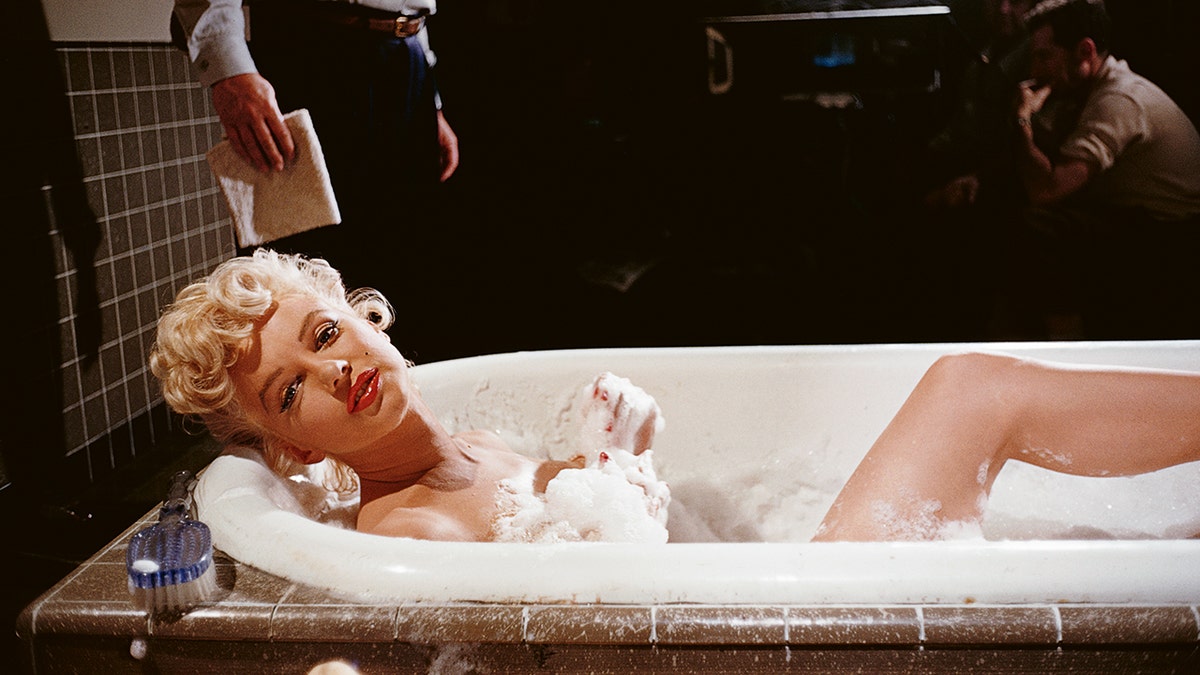
“The Seven Year Itch” premiered on June 1, 1955, in New York City. (© Shaw Family Archives Ltd)
“It started in 1941 when he was a photojournalist. … It was during World War II, and he photographed these young women and sailors, who were on a break in Coney Island. He took these photographs of women standing over the grates in Coney Island, and the wind is blowing their skirts up. And one of these images appeared on the cover of a magazine called Friday in 1941.”
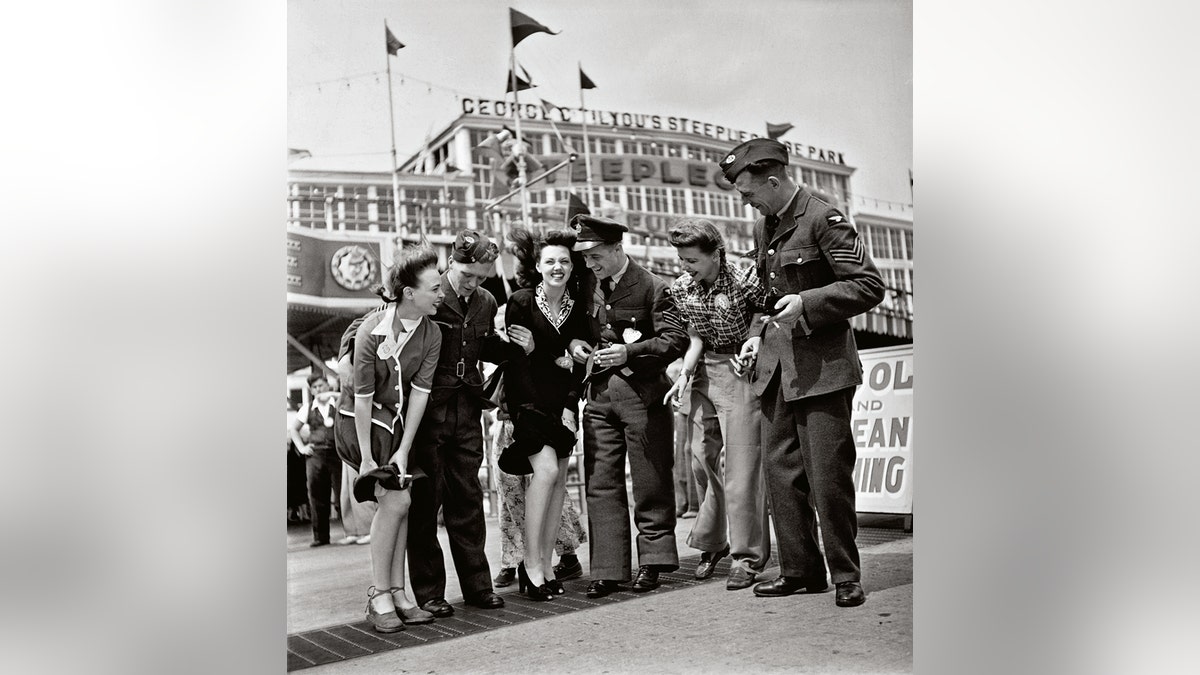
Sam Shaw’s Coney Island photos were featured in Friday magazine. They inspired an iconic moment in the 1955 film “The Seven Year Itch.” (© Shaw Family Archives Ltd)
“So fast-forward to 1954, Sam was hired to be the still photographer for ‘The Seven Year Itch,’” Stevens shared. “He read the script, and there’s a line where Marilyn is coming out of a movie theater. She walks over the grate, and a subway car is passing underneath. And then there’s this wind. The line in the script is something like, ‘Oh, do you feel the breeze? Isn’t it delicious?’”
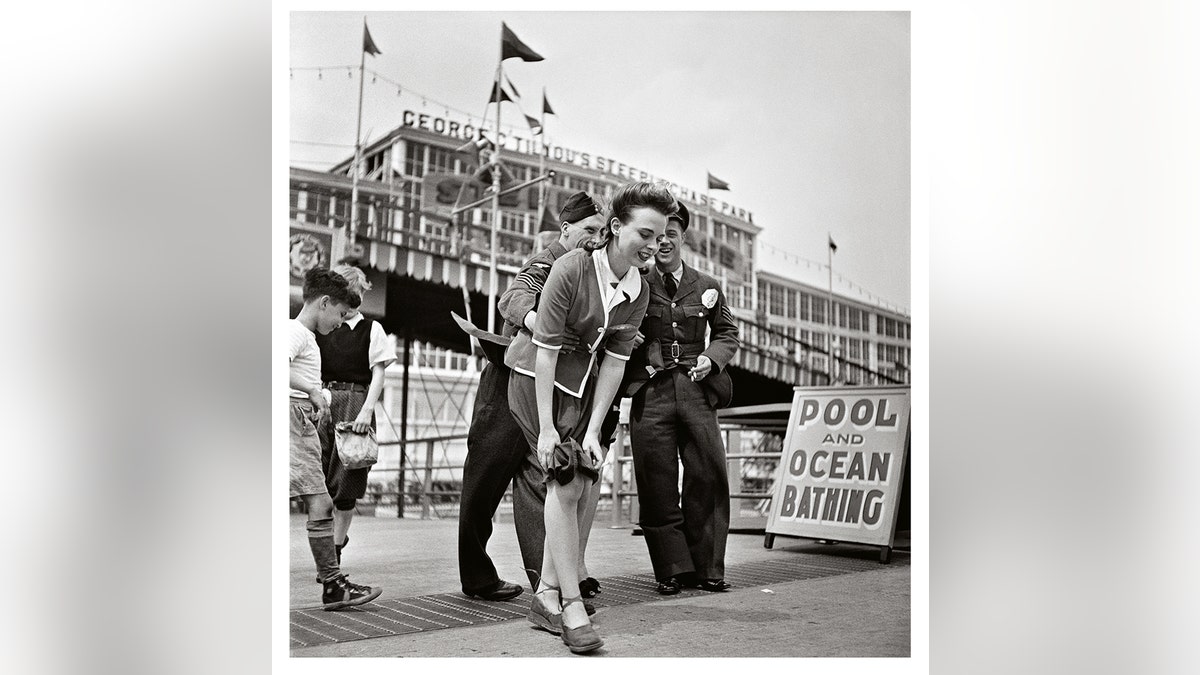
Sam Shaw’s Coney Island photos were published in Friday magazine during WWII. (© Shaw Family Archives Ltd)
“The minute that Sam read that in the script, he remembered the 1941 photograph from Coney Island and how successful it was,” said Stevens. “He essentially repurposed that photograph . . . which is very joyful and fun.”
WATCH: MARILYN MONROE’S FAMOUS PHOTO HAS A HIDDEN BACKSTORY
“It became a bigger event than he had ever anticipated,” she added.
According to the book, Shaw asked the movie studio to “arrange for an additional number of police officers to handle the crowd that was sure to gather” at New York City’s Lexington Avenue and 51st Street. A technician would operate a wind machine under the spot where Monroe would step on to simulate a passing subway.
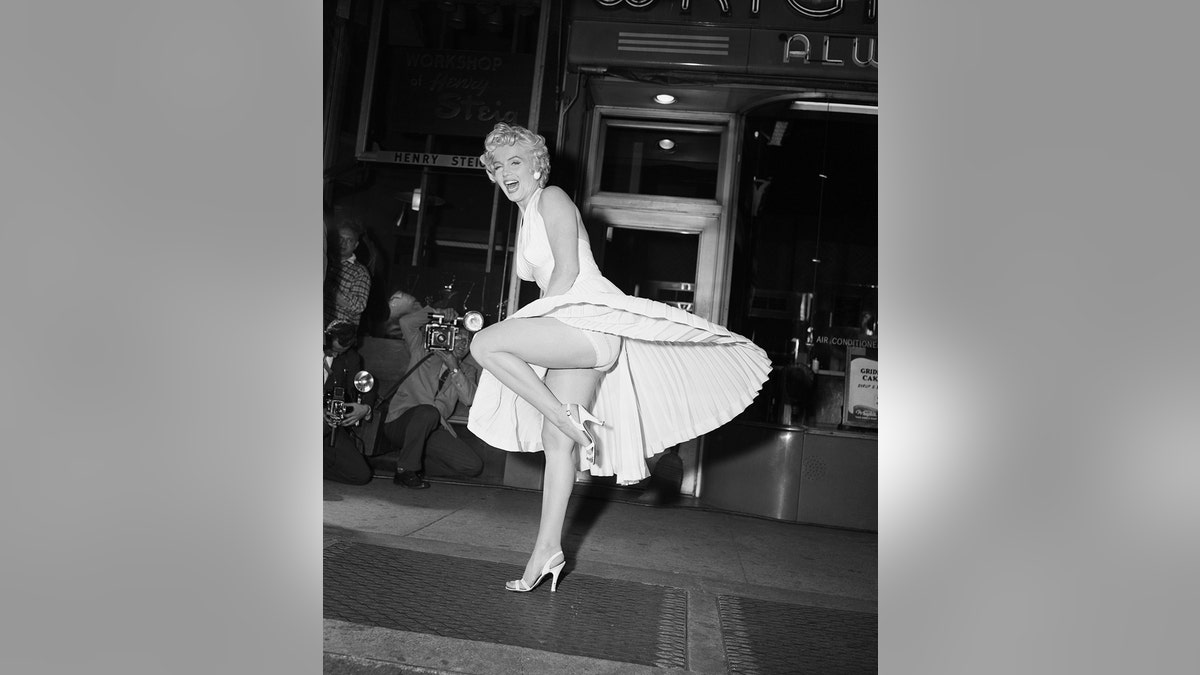
Marilyn Monroe’s flying dress scene was filmed in New York City, then reshot at a Hollywood studio. (Getty Images)
On Sept. 15, 1954, thousands, mostly men, gathered to see the blonde bombshell’s dress fly up in front of cameras. With every camera flash, the 29-year-old’s white underwear was visible to the roaring crowd.
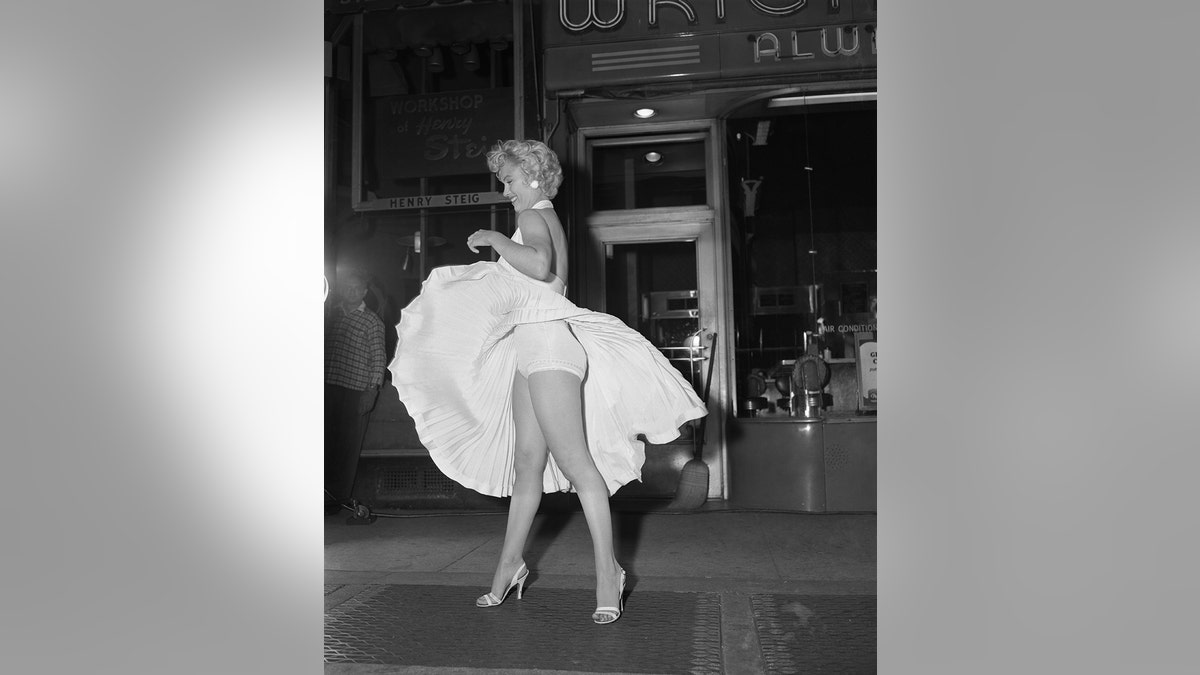
Film star Marilyn Monroe poses over a Manhattan subway grate as the wind blows her white dress up. Photographers captured the moment on camera, which took place on Sept. 16, 1954, during the filming of “The Seven Year Itch.” Reportedly, Monroe’s husband Joe DiMaggio was displeased with the attention his wife received from the crowds. (Getty Images)
“The police were completely off guard, more fascinated watching Marilyn, forgetting the mob,” Shaw wrote. “Not one person in the crowd broke through. They were too mesmerized by what they were seeing.”
Stevens said filmmakers were worried about how far they could go.
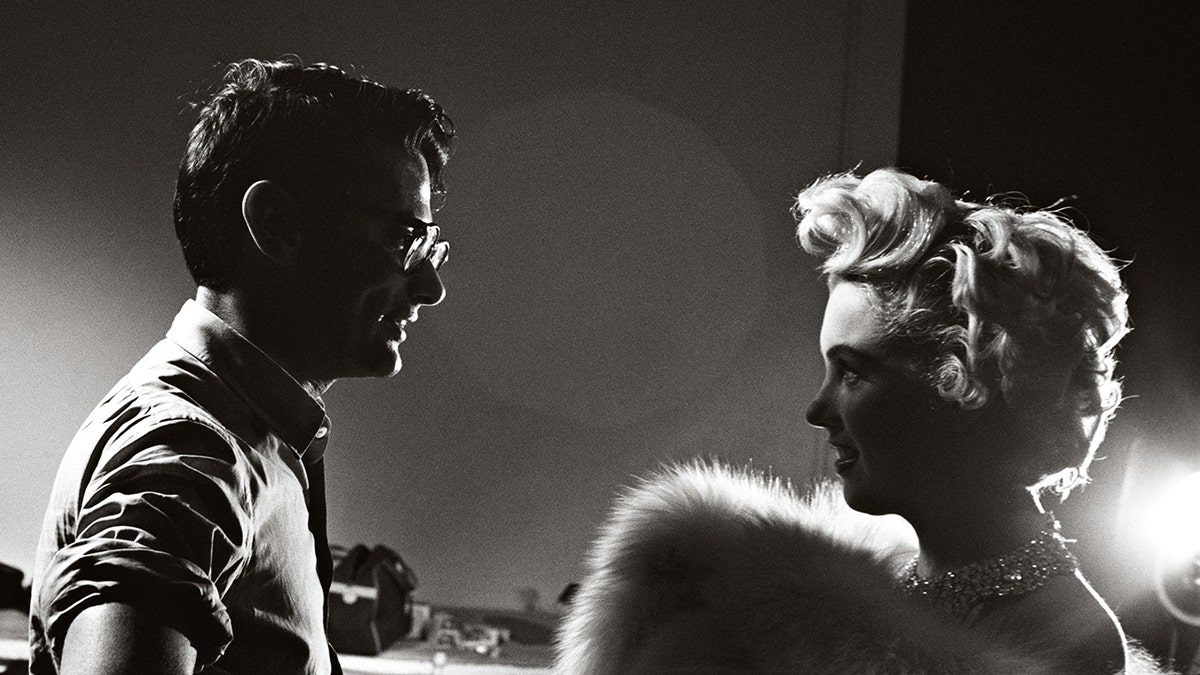
Richard Avedon and Marilyn Monroe at Avedon’s studio in New York City, circa 1954. (© Shaw Family Archives Ltd)
“People may think today, ‘What’s the big deal about a woman with her skirt blowing up a little bit?’” said Stevens.
CLICK HERE TO SIGN UP FOR THE ENTERTAINMENT NEWSLETTER
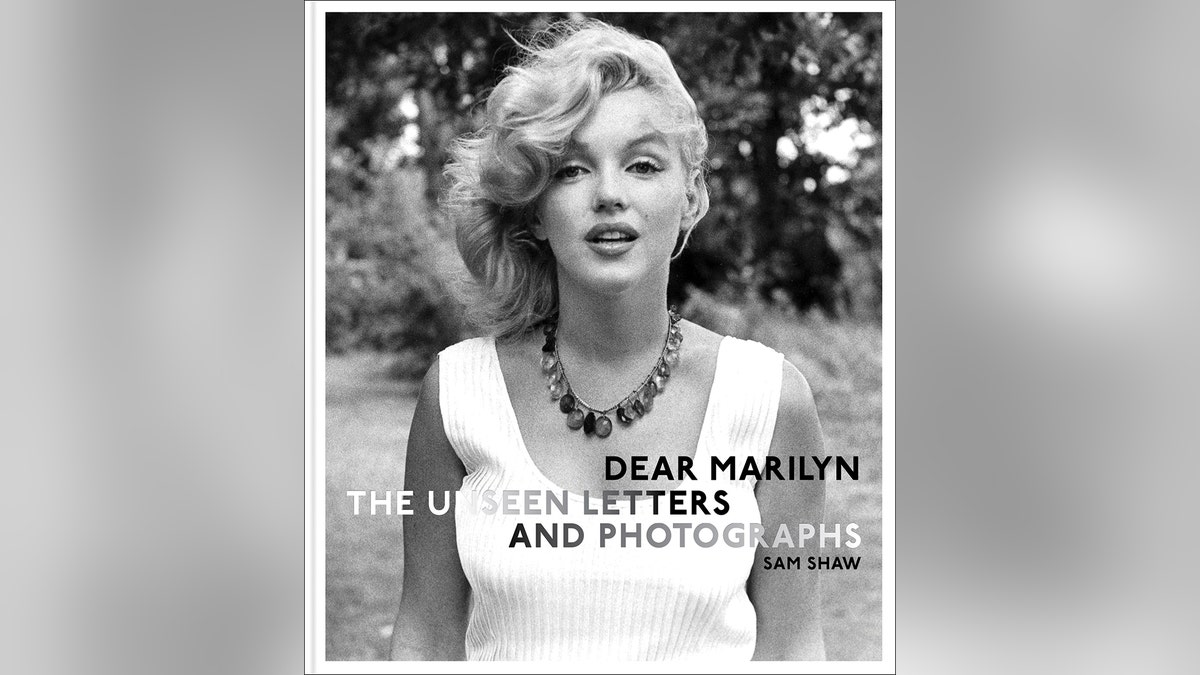
“Dear Marilyn: The Unseen Letters and Photographs” is available now. (ACC Art Books)
“Yet it was very controversial at the time. Also, given the censorship and the rules of the Hollywood studio system, those things were not allowed. Sam talks about this in the book. He writes about how they had to tread very carefully in the filming of the scene and the way he was photographing it. Otherwise, it would be cut from the movie. It would’ve been censored.”
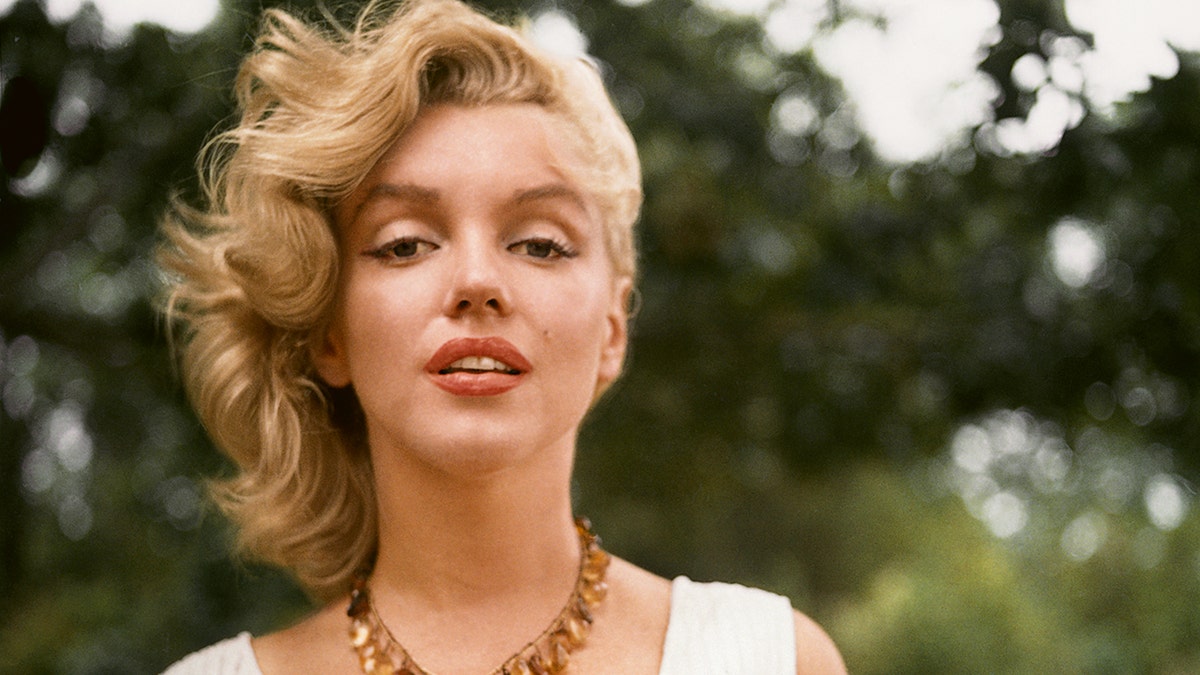
Marilyn Monroe poses wearing an amber bead necklace in 1957 in Amagansett, New York. (© Shaw Family Archives Ltd)
“Even though that seems ridiculous today from the point of view of just how much skin we see daily, I think we have to really understand the context of the time in 1950s America,” said Stevens.
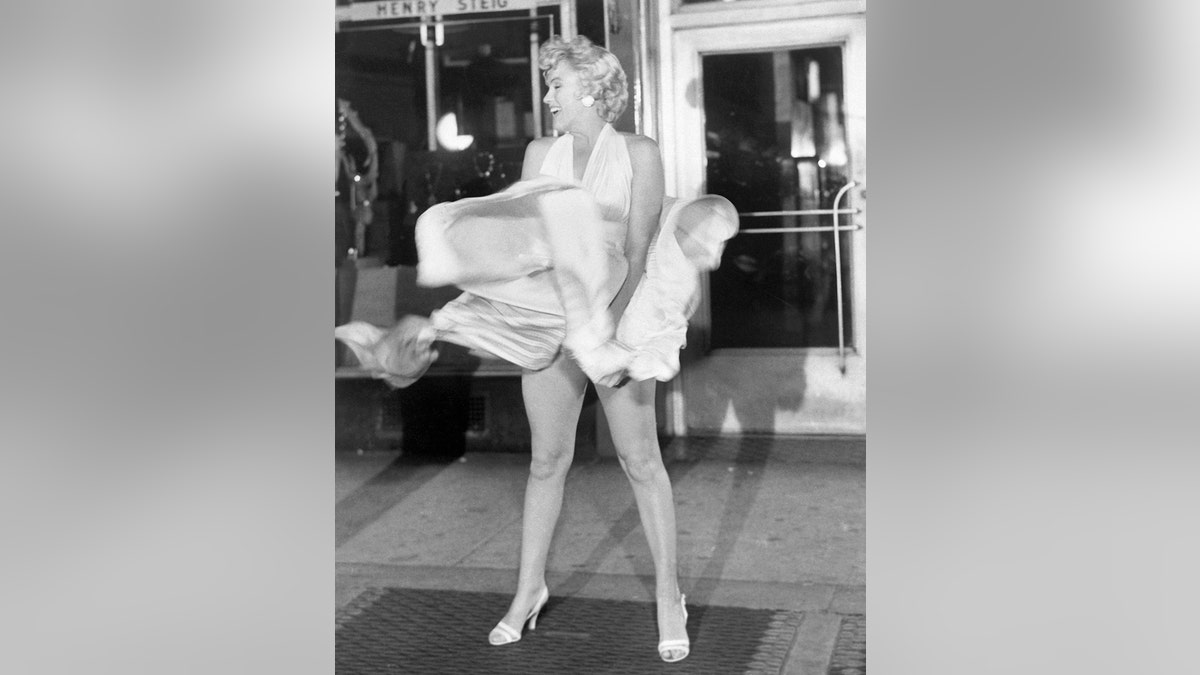
Actress Marilyn Monroe tries to hold down her dress as wind from a subway grate blows it upward during filming of “The Seven Year Itch” in Manhattan. (Getty Images)
The final cut was modest compared to what everyone saw that evening. In the film, Monroe’s dress isn’t seen going dramatically over her waist. Still, the Catholic Legion of Decency and other morality groups would criticize the scene as indecent.
Shaw wrote that Monroe “enjoyed the whole experience more than anyone — even more than the man below at the wind machine.”
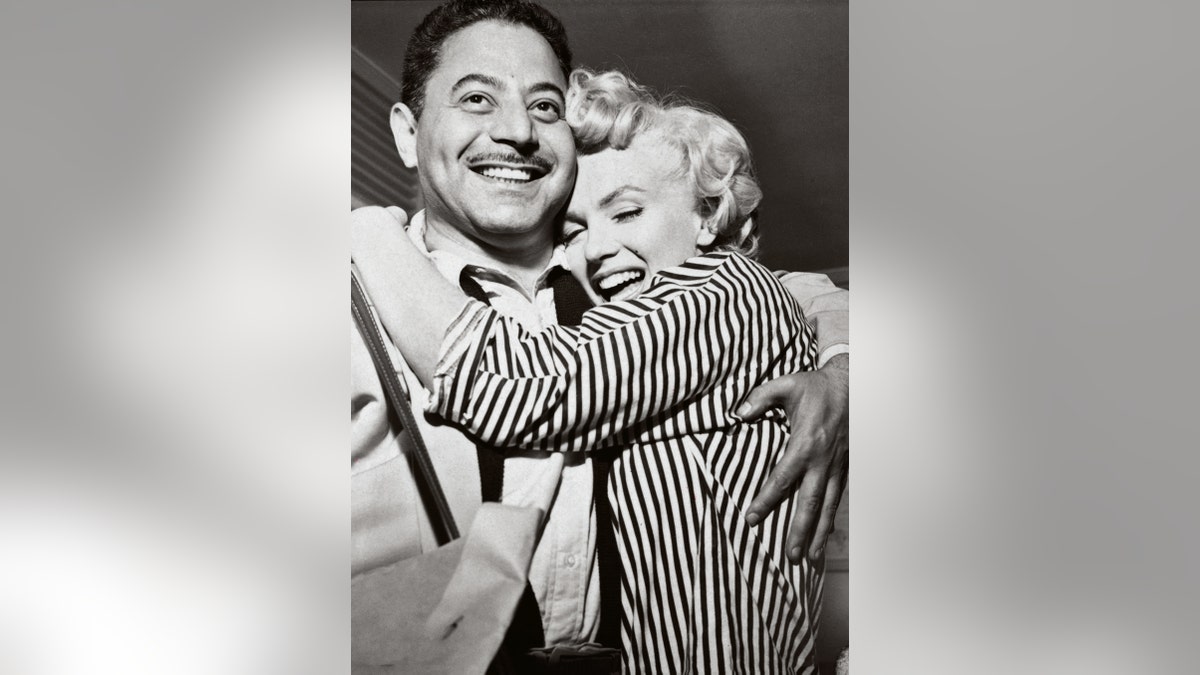
Sam Shaw and Marilyn Monroe share a heartfelt moment at the Hollywood film studio in 1954. (Photograph by Bruno Bernard © Joshua John Miller)
The scene was reshot in a Los Angeles sound studio where Shaw had control over wind and lighting “without thousands of onlookers.” The blowing skirt shot became the key ad image for the film.
“The Seven Year Itch” made Marilyn Monroe a legend. It also came at a price.
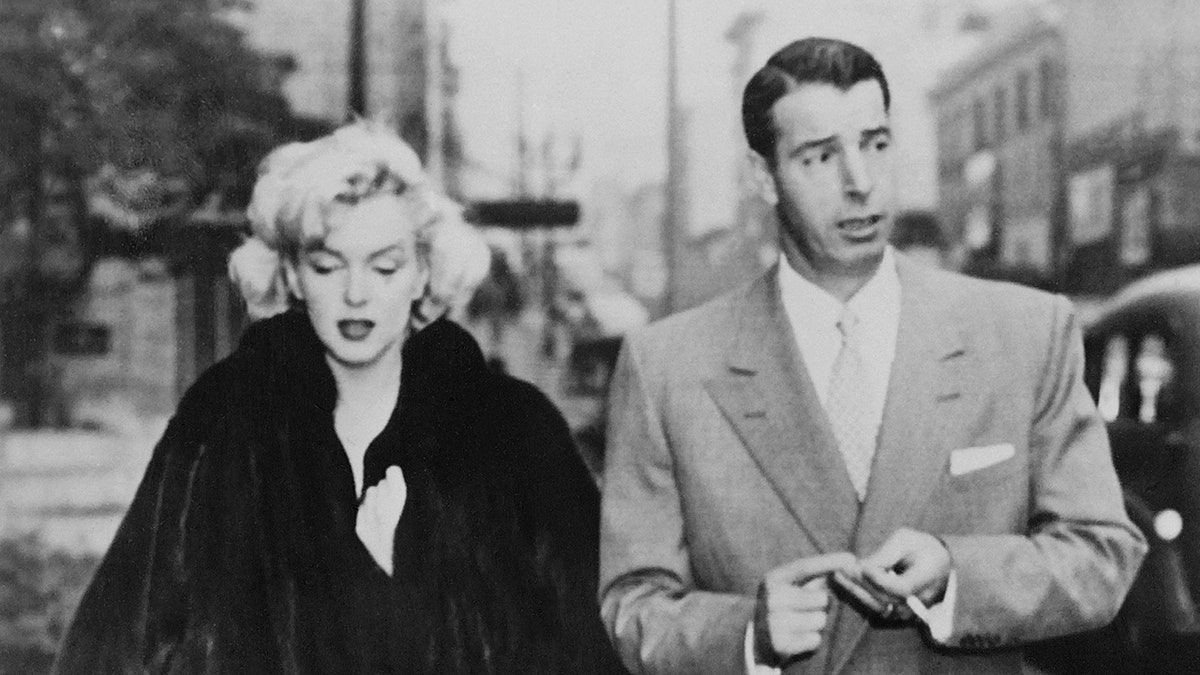
Marilyn Monroe and Joe DiMaggio married on Jan. 14, 1954. They divorced in October of that year. (AFP via Getty Images)
“It was during the subway grate photo shoot in New York for ‘The Seven Year Itch’ that [Monroe’s husband] Joe DiMaggio was reported to walk away in anger,” Shaw wrote.
LIKE WHAT YOU’RE READING? CLICK HERE FOR MORE ENTERTAINMENT NEWS
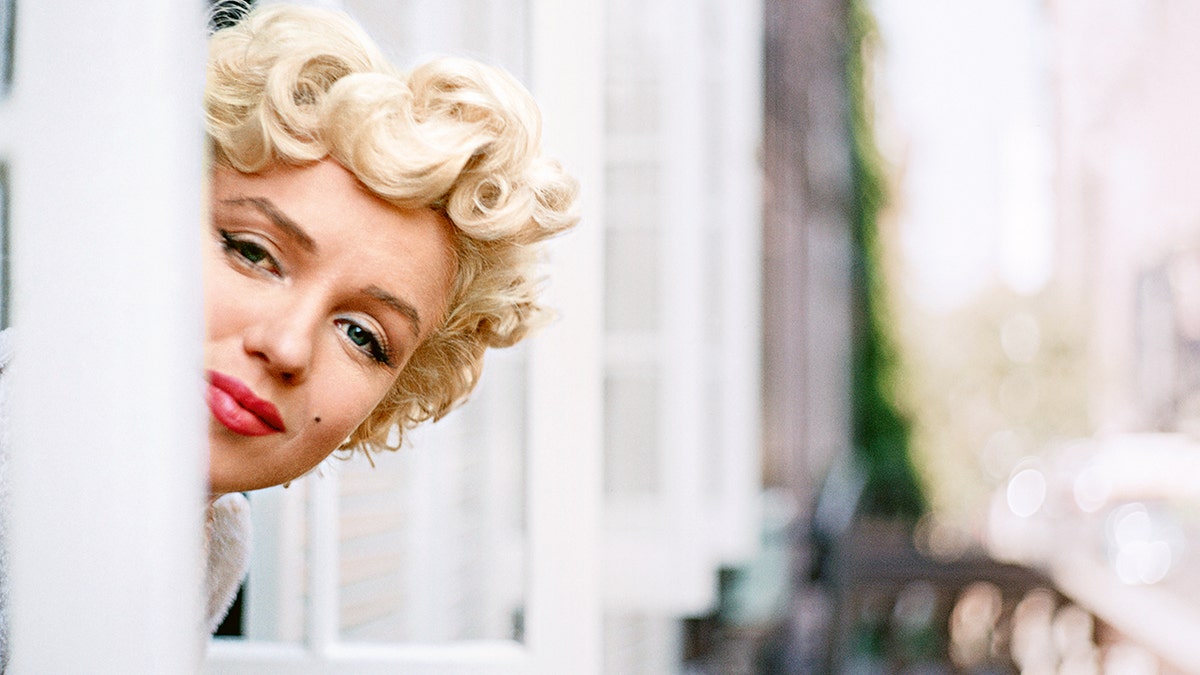
Marilyn Monroe is seen here having a candid moment with Sam Shaw in-between takes. (© Shaw Family Archives Ltd)
“Three weeks after the shoot, Marilyn told reporters her marriage was over. I never saw her cry except on television the morning she left Joe. … To the press and the waiting world, all tears. That afternoon, she was on set. Her spirits were high. She was back in the studio working, posing and remembering her lines, take after take. That evening, we went to dinner. She was all laughs and high enthusiasm.”
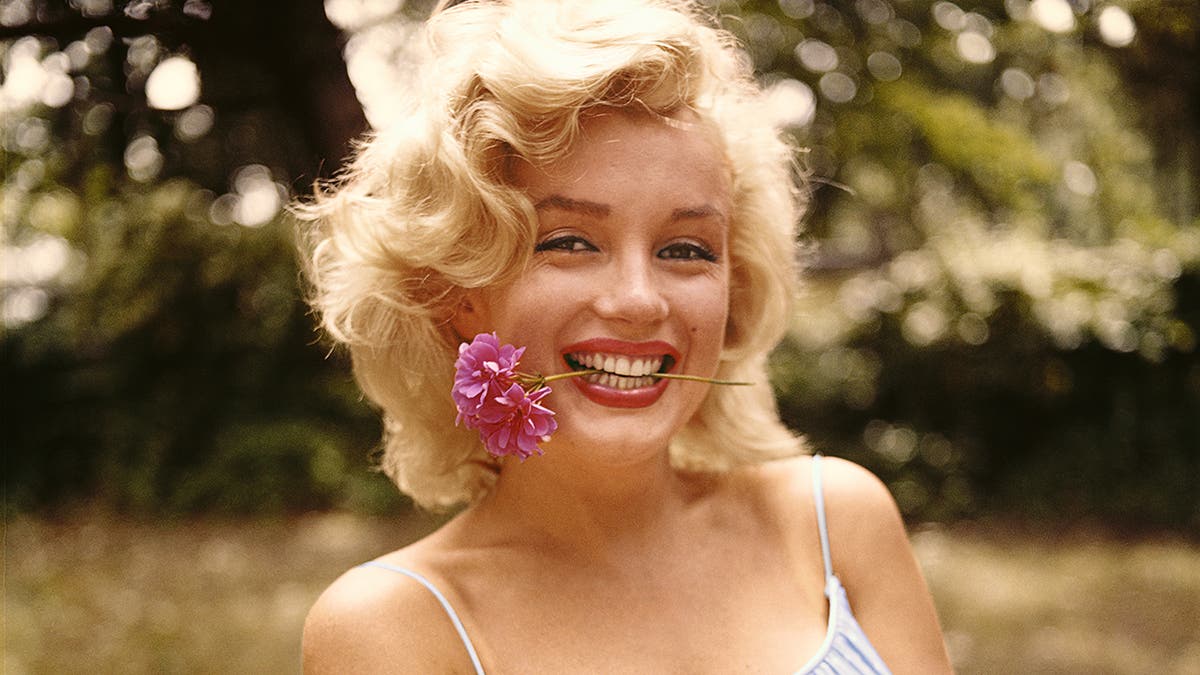
In “Dear Marilyn,” Sam Shaw wrote that Marilyn Monroe immersed herself in her Hollywood career after calling it quits with Joe DiMaggio. (© Shaw Family Archives Ltd)
“What brought about the divorce? I do not know,” Shaw reflected. “Unfortunately, her [three] husbands never really understood her individuality. Like many men, they wanted to fashion her and remake her to their own standards. Joe … was known for his high standards and purity off the field.”
The film also made Monroe realize her worth in Hollywood.
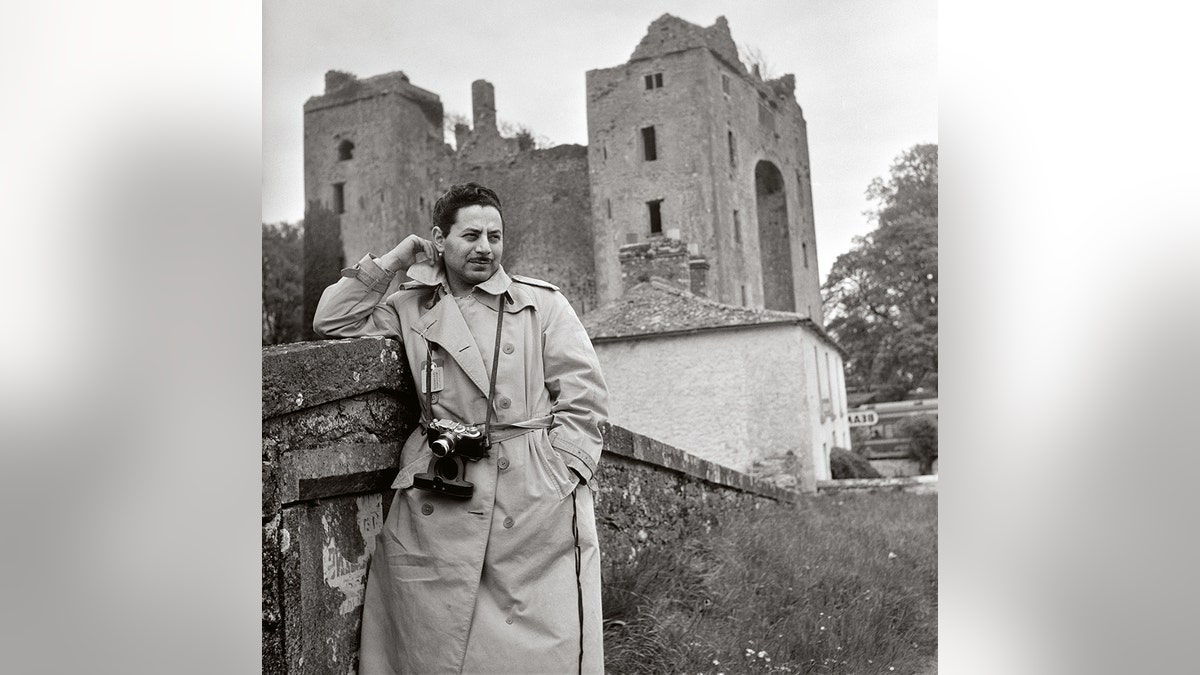
Sam Shaw died in 1999. He was 87 years old. Shaw, a celebrated photographer, shared a close friendship with Marilyn Monroe. (© Shaw Family Archives Ltd)
“She demanded more than her starlet salary,” Shaw wrote. “The costumers, hairdressers and makeup artists were all paid more than Marilyn the superstar. She demanded better scripts and director approval. She broke her 20th Century Fox contract. She declared her freedom. She defied the conventions of her time. She asserted herself as an actress and a woman. … She was on strike against the most powerful movie studio in the business.”
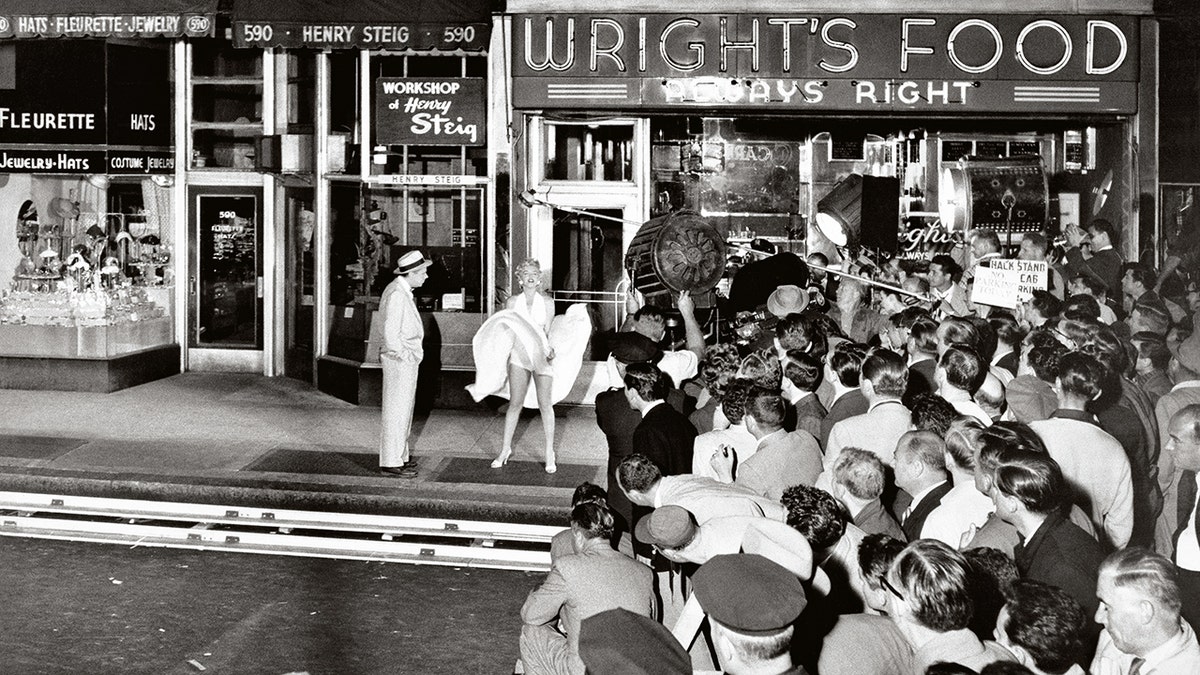
A crowd of onlookers at the corner of 51st Street and Lexington Avenue during the filming of “The Seven Year Itch” in September 1954. (© Shaw Family Archives Ltd)
“The studio was furious,” he continued. “They tried to stop her publicity and fame. But they needed her to sell the film. The very young woman they helped to stardom now declared herself free. She was a star. Her name above the title. Now they had to accept her on her own terms. For Marilyn, it wasn’t a fight for money but for story rights, executive and director approval. Marilyn didn’t need them to publicize her buildup. The press and the world were at her feet and at her whim, and her whim was a whim of iron.”
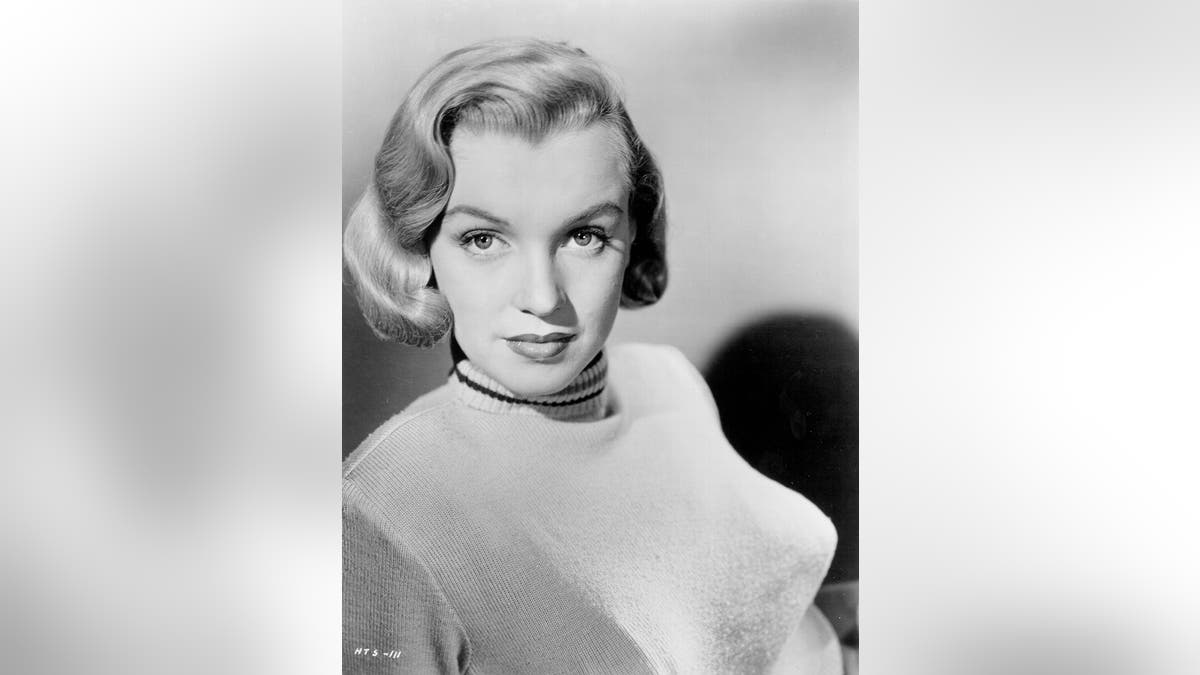
Sam Shaw met Marilyn Monroe in 1951 (pictured here) in Hollywood. (Michael Ochs Archives/Getty Images)
Shaw died in 1999 at age 87. Stevens said that her grandfather was fiercely protective of his friendship with Monroe, who passed away in 1962 at age 36. Many of his letters to Monroe are seen for the first time in the book, including one he wrote a year before her death.
CLICK HERE TO GET THE FOX NEWS APP
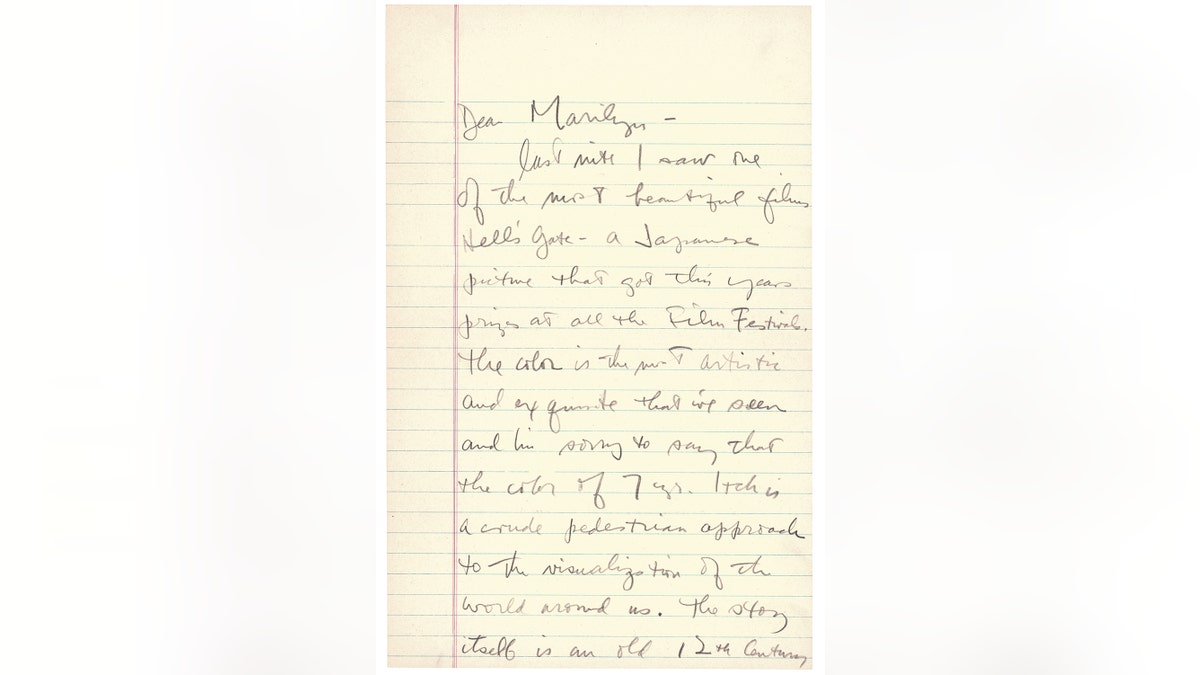
Sam Shaw last wrote to Marilyn Monroe a year before her death. (© Shaw Family Archives Ltd)
“The tone of that letter is different than the other letters,” said Stevens. “The tone is more bittersweet. … He’s writing right after she separated from Arthur Miller. So, he refers to ‘the turmoil.’ … My grandfather says, ‘Do you want to come to Paris and stay with us? We have an extra room. My wife is asking about you. You’re invited.’ There’s clearly the concern of a good friend about how she’s doing.”
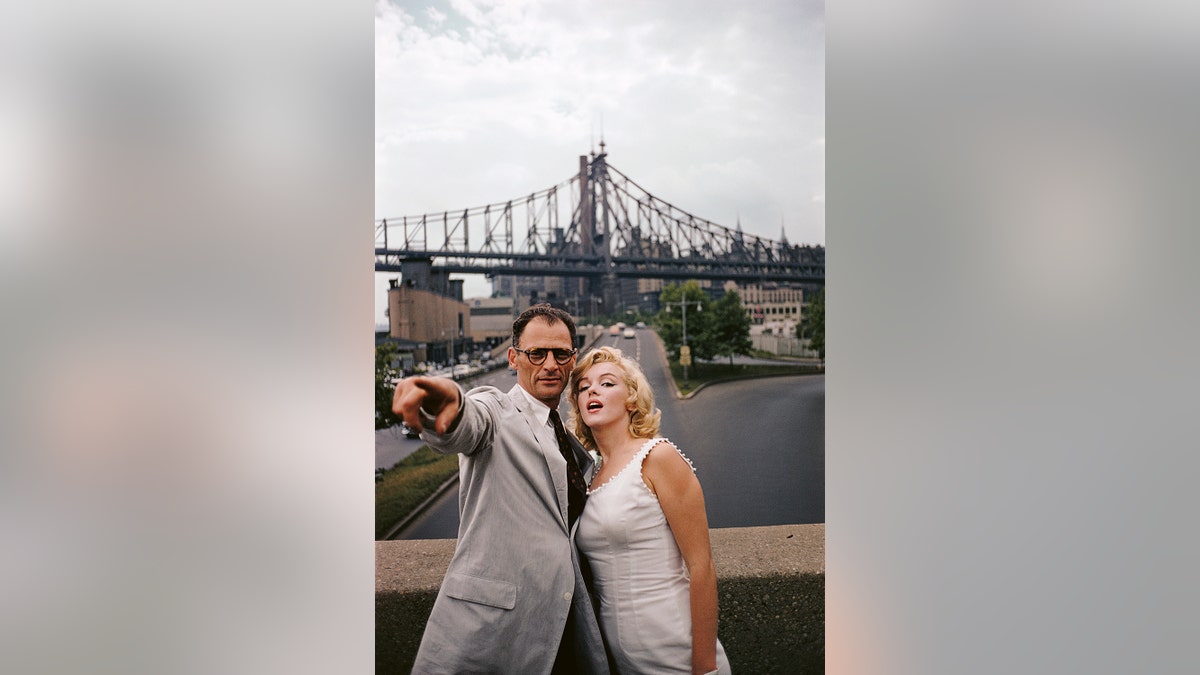
Marilyn Monroe and Arthur Miller at the Queensboro Bridge in New York City, circa 1957. They married in 1956. Their divorce was finalized in 1961. (© Shaw Family Archives Ltd)
“There’s a lot of difficulty in Marilyn Monroe’s life,” said Stevens. “But Sam referred to something called ‘the joy of Marilyn.’ … Sam always focused on this young woman who really was funny, smart, joyful … Marilyn is always described as a victim and vulnerable. Sam did not describe her that way. Sam described her as tough and strong and that she was able, in fact, to deal and cope well with a lot of the adversity in her life.”
Stevens said fans are still fascinated by Monroe because she embodies “the American dream.”
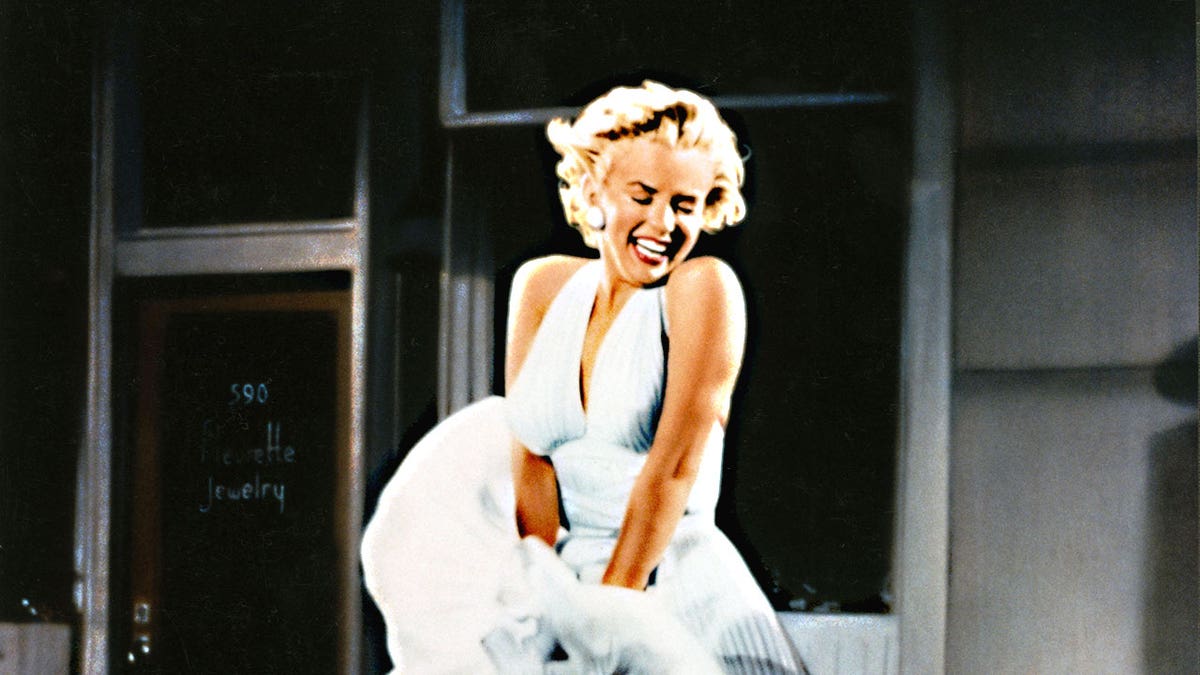
“The Seven Year Itch,” directed by Billy Wilder, made Marilyn Monroe an international sex symbol in 1955. ( Collection Christophel © Twentieth Century Fox / Charles K Feldman Group)
“She started with nothing,” said Stevens. “No money and a troubled family situation. Yet somehow, she rose to the top. That’s the story Sam tells, the story of a hardworking young woman who really did make it.”